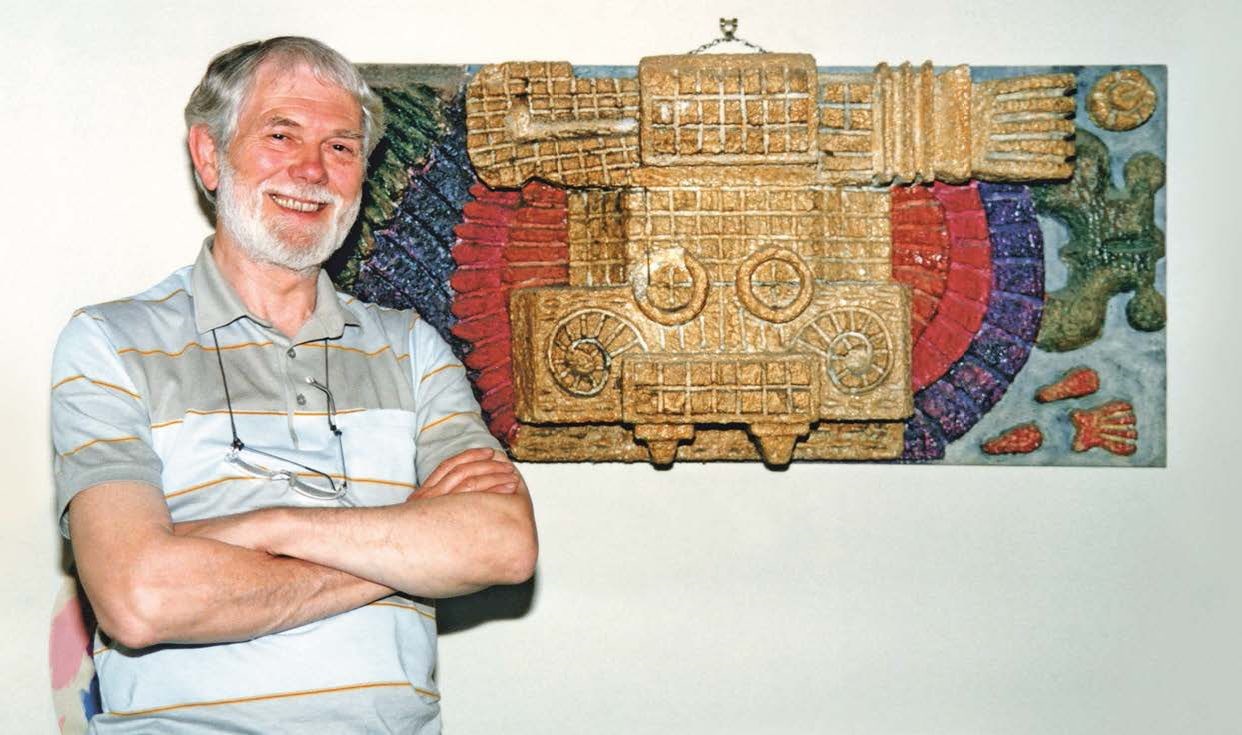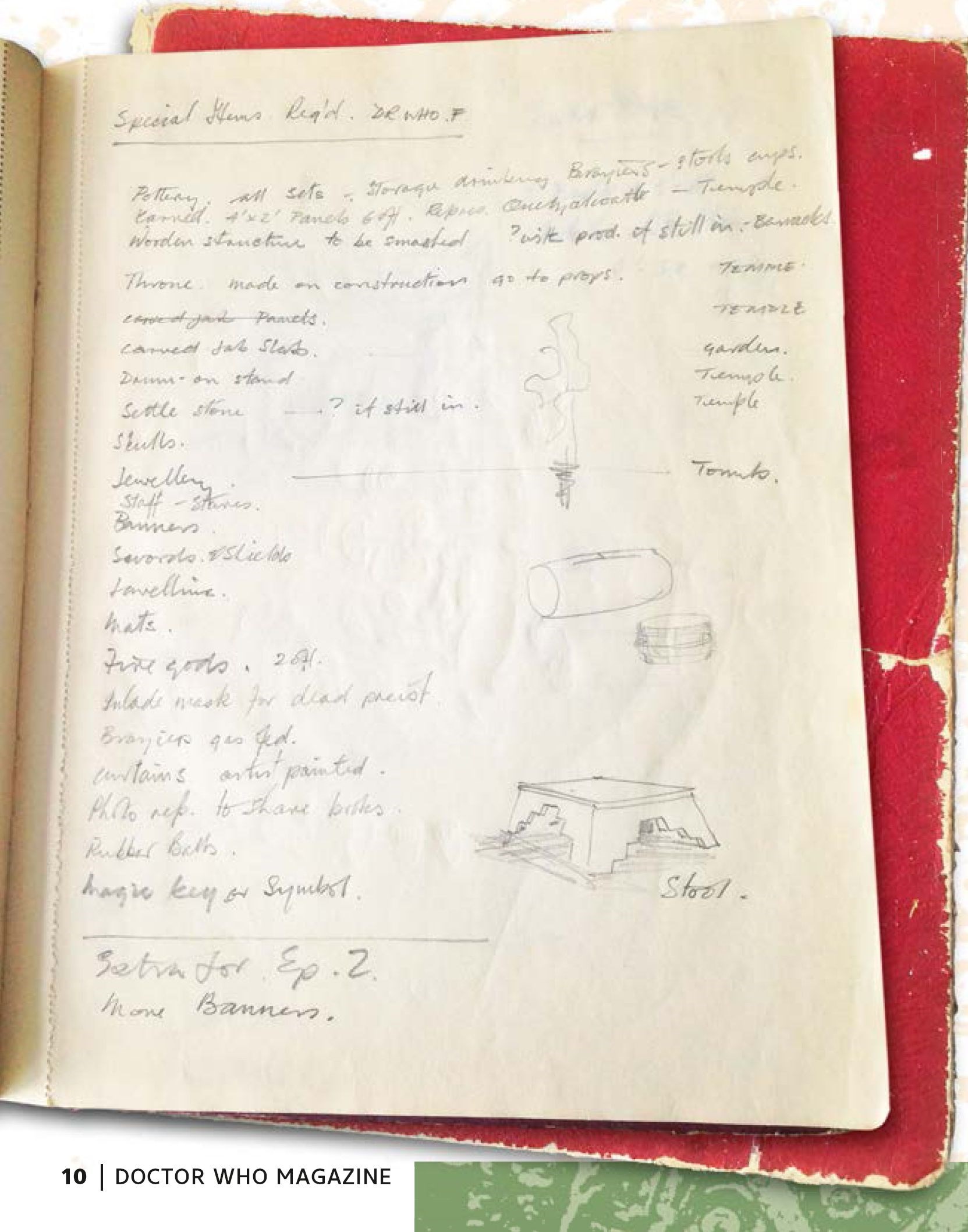
Designer Barry Newbery with one of the wall sculptures he designed for The Aztecs (1964).

In his notebook, Newbery listed props and other special items required for use in the serial. Photos © David J Howe.
The Aztecs (1964) remains one of the highlights of Doctor Who’s first year, in which the Doctor and his fellow TARDIS travellers Susan, Ian and Barbara found themselves trapped in 15th-century Mexico, a world every bit as alien as the planets Skaro or Marinus. Just as the travellers had found themselves overlooking a vast and weird metropolis in the first episode of the first Dalek serial, so too schoolteacher Ian found himself looking out upon the streets of another strange and sprawling capital early in the first instalment, The Temple of Evil. “Doctor, look at this extraordinary city down here,” he said. “The Aztecs,” confirmed the Doctor. “They knew how to build…”